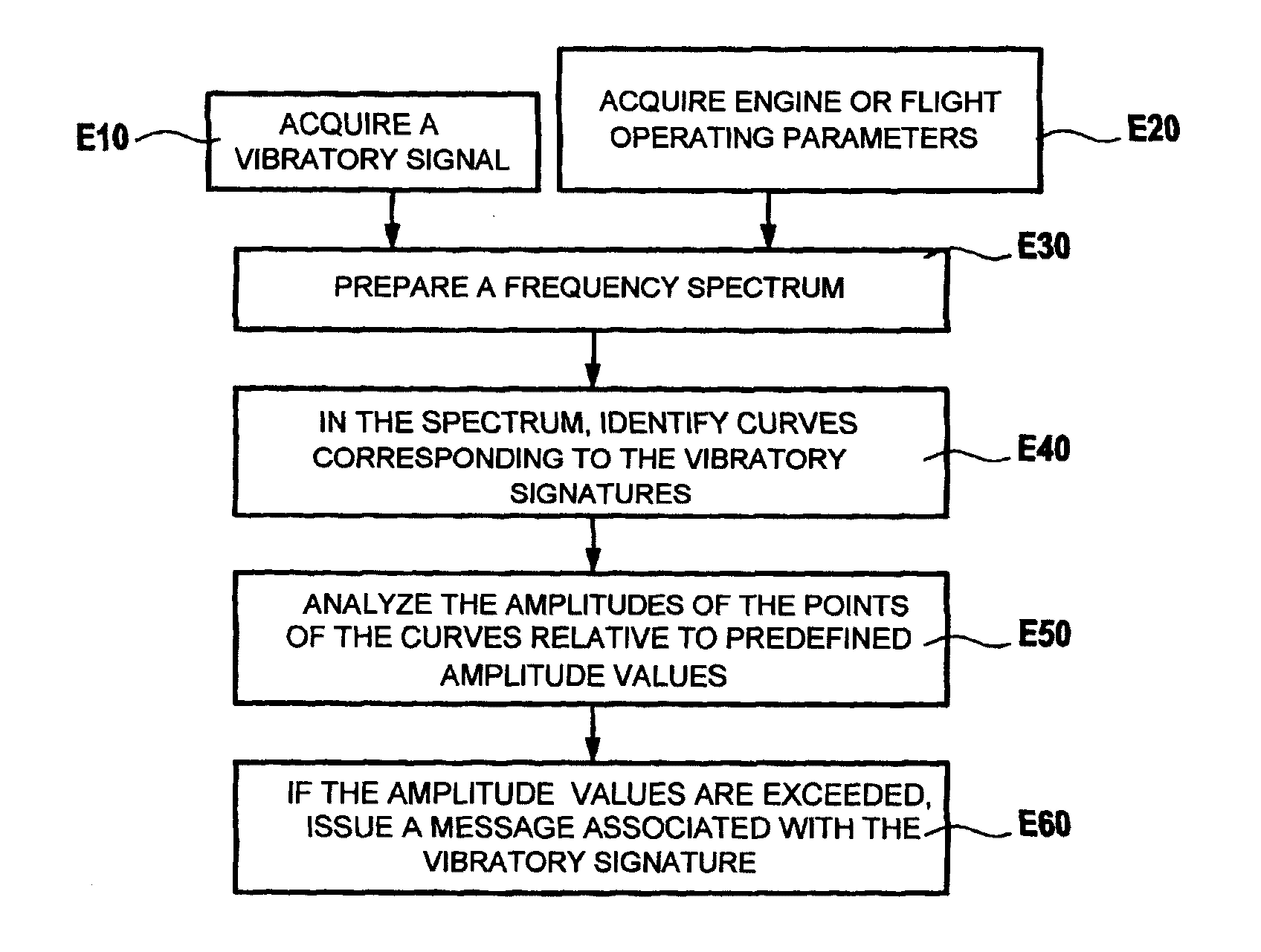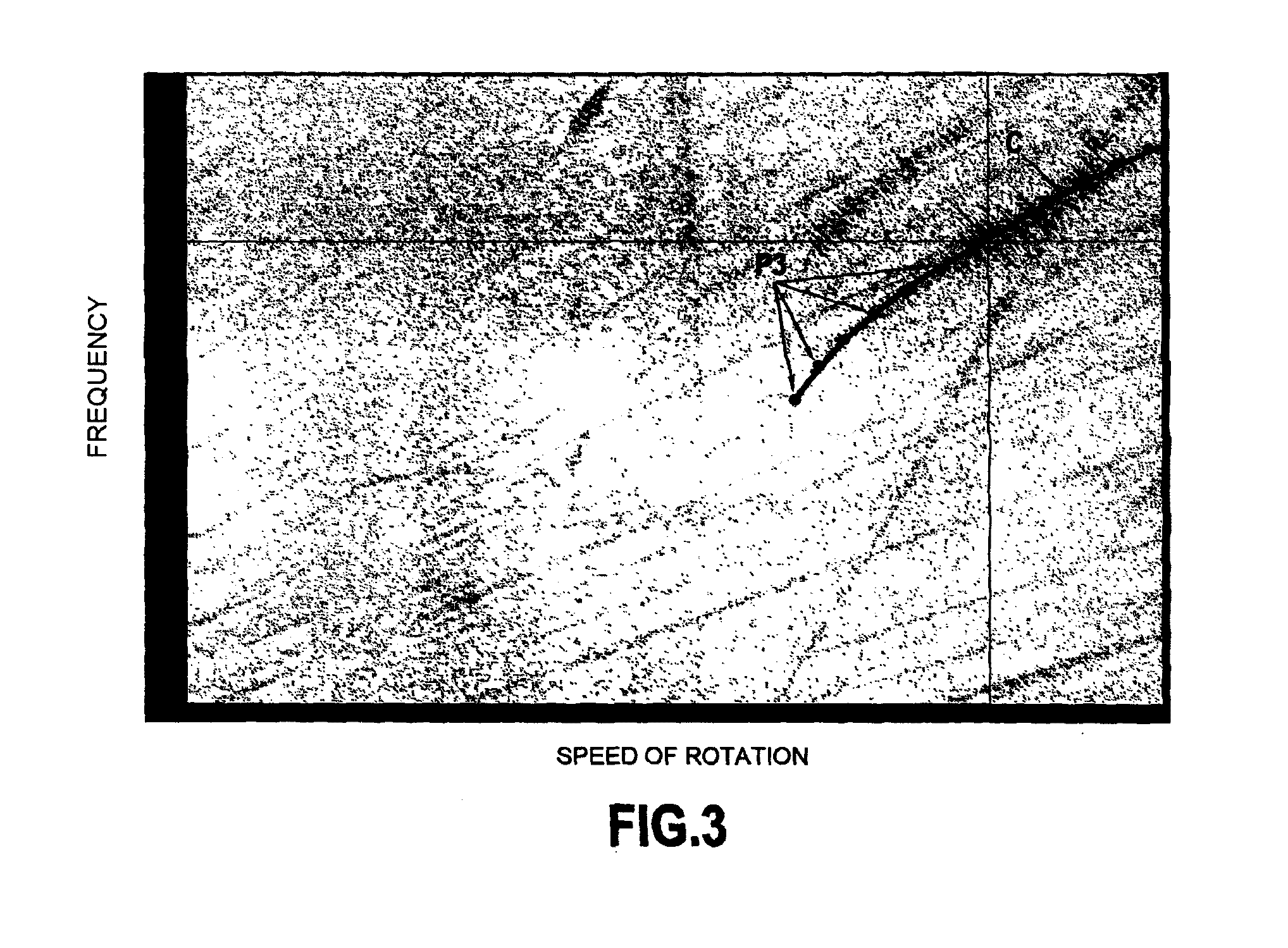Method and a system for monitoring vibratory phenomena that occur in an aviation gas turbine engine in operation
a technology of vibratory phenomena and gas turbine engines, which is applied in the field of monitoring gas turbine engines, can solve the problems of not always guaranteed, complicated or even impossible to calculate the theoretical operating frequency with defects for all components of the engine, and the prior art monitoring method presents certain limits as to its application, so as to achieve the effect of reducing such drawbacks and improving the monitoring of the aircraft gas turbine engin
- Summary
- Abstract
- Description
- Claims
- Application Information
AI Technical Summary
Benefits of technology
Problems solved by technology
Method used
Image
Examples
Embodiment Construction
[0033]The monitoring method and system of the invention apply to any type of gas turbine engine fitted to aircraft, such as airplanes or helicopters, for example.
[0034]In the presently-described example, attention is given more particularly to an airplane gas turbine engine that has two rotors. Naturally, the invention is not limited to a two-rotor engine but applies to any aircraft gas turbine engine having one or more rotors.
[0035]The monitoring method and system of the invention serves automatically to identify particular vibratory phenomena that occur in the engine in operation and that originate from a defect in or abnormal operation of a component in the engine (including ancillary equipment). The monitored defects comprise for example wear of a rolling element of a bearing, flutter of the fan (in a turbomachine), etc. As for abnormal operation of a component of the engine, this may involve, for example, a rolling element of a bearing sliding in its raceways.
[0036]The monitori...
PUM
 Login to View More
Login to View More Abstract
Description
Claims
Application Information
 Login to View More
Login to View More - R&D
- Intellectual Property
- Life Sciences
- Materials
- Tech Scout
- Unparalleled Data Quality
- Higher Quality Content
- 60% Fewer Hallucinations
Browse by: Latest US Patents, China's latest patents, Technical Efficacy Thesaurus, Application Domain, Technology Topic, Popular Technical Reports.
© 2025 PatSnap. All rights reserved.Legal|Privacy policy|Modern Slavery Act Transparency Statement|Sitemap|About US| Contact US: help@patsnap.com



